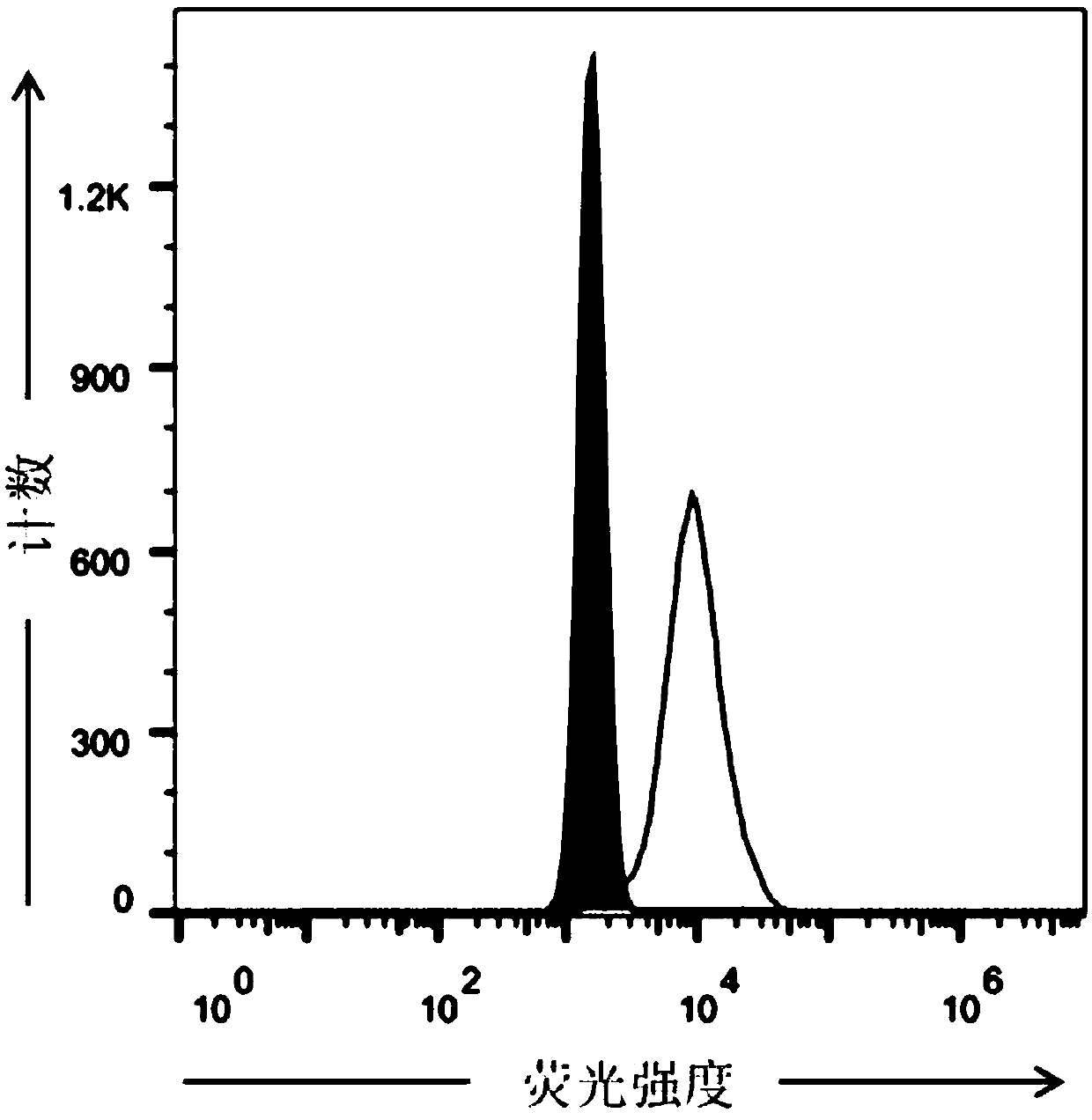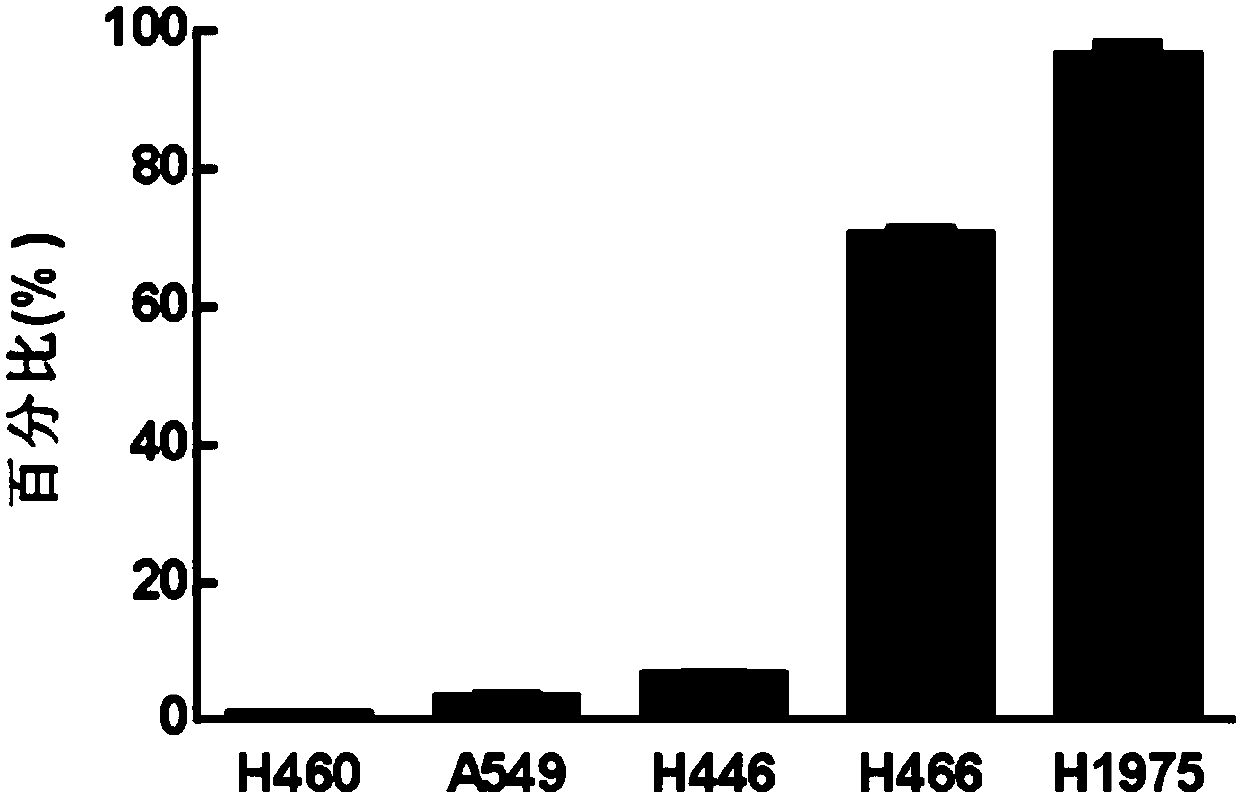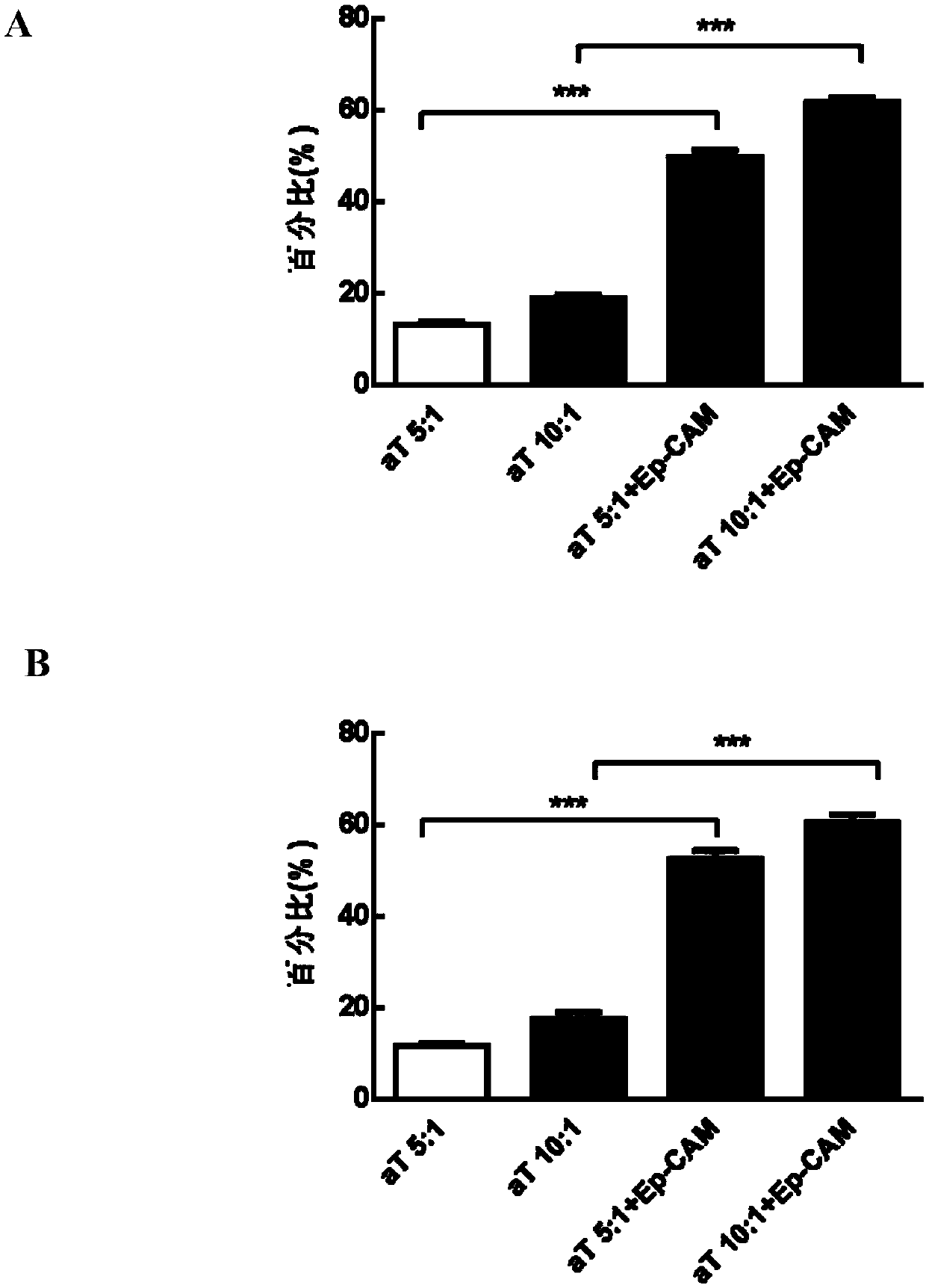Anti-CD3 and anti-EpCAM bispecific antibody and application thereof in treating lung cancer
A bispecific antibody, antibody technology, applied in the treatment of lung cancer, in the field of anti-CD3 and EpCAM bispecific antibodies, can solve the problem of patients who are prone to miss the best treatment timing, the tumor killing effect is not as good as hematological tumors, the number of TIL cells and the limited proliferation ability and other problems, to achieve the effect of facilitating the operation and clinical application and promotion of tumor immunotherapy, enhancing anti-tumor immunity, and enhancing tumor immune response
- Summary
- Abstract
- Description
- Claims
- Application Information
AI Technical Summary
Problems solved by technology
Method used
Image
Examples
Embodiment 1
[0057] Example 1, Preparation of anti-CD3 and anti-EpCAM bispecific antibody
[0058] The anti-CD3 and anti-EpCAM bispecific antibody is the anti-CD3 and anti-EpCAM bispecific antibody obtained by linking the anti-CD3 single-chain antibody and the anti-EpCAM single-chain antibody; specifically, the heavy chain variable region of the anti-CD3 single-chain antibody and the Heavy chain variable region linkage of anti-EpCAM single chain antibody.
[0059] The amino acid sequence of the bispecific antibody is sequence 1 in the sequence listing.
[0060] The DNA molecule encoded by the anti-CD3 and anti-EpCAM bispecific antibody is sequence 2 in the sequence listing (the sequence was synthesized by Invitrogen).
[0061] The light chain variable region of the anti-CD3 single chain antibody is the 1st-142th position of the sequence 1 in the sequence listing; the heavy chain variable region of the anti-CD3 single chain antibody is the 143rd-283rd position of the sequence 1 in the sequ...
Embodiment 2
[0079] Example 2, Application of Anti-CD3 and Anti-EpCAM Bispecific Antibodies
[0080] 1. Application of anti-CD3 and anti-EpCAM bispecific antibodies in inducing T cells to kill lung cancer cell lines
[0081] 1. Expression of EpCAM in lung tumor cell lines
[0082] The tumor cell line is a lung cancer cell line, specifically H460 ( HTB-177 TM ), A549 ( CCL-185 TM ), H446( HTB-171 TM ), H466 (Lilac Tongmiao Lingbiology, L4714) or H1975 ( CRL-5908 TM ). Scrape the cells with a cell scraper, gently resuspend, centrifuge at 800rpm / min for 4 minutes, wash twice with PBS, add APC-anti-human EpCAM (Biolegend, Cat. No. 369810) for flow cytometry antibody staining for 1 minute, and then wash twice with PBS , the expression of EpCAM in the above tumor cell lines was detected by flow cytometry.
[0083] see results figure 2 : The EpCAM expression ratio of H460 was 0.84±0.24%, the EpCAM expression ratio of A549 was 3.31±0.68%, the EpCAM expression ratio of H446 was 6.59±0...
PUM
 Login to View More
Login to View More Abstract
Description
Claims
Application Information
 Login to View More
Login to View More - R&D
- Intellectual Property
- Life Sciences
- Materials
- Tech Scout
- Unparalleled Data Quality
- Higher Quality Content
- 60% Fewer Hallucinations
Browse by: Latest US Patents, China's latest patents, Technical Efficacy Thesaurus, Application Domain, Technology Topic, Popular Technical Reports.
© 2025 PatSnap. All rights reserved.Legal|Privacy policy|Modern Slavery Act Transparency Statement|Sitemap|About US| Contact US: help@patsnap.com



